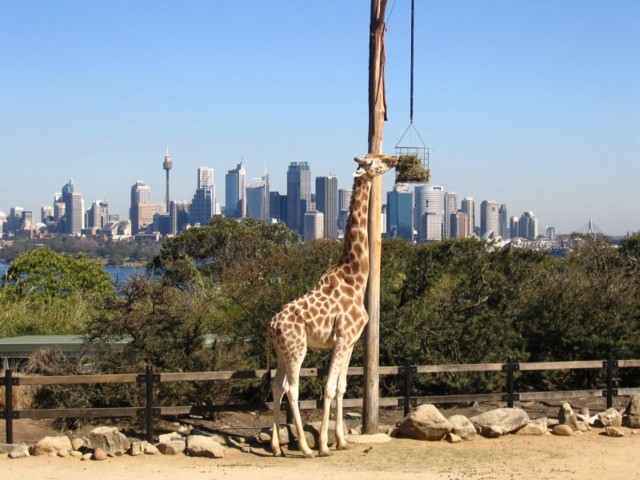
Here's the deal: Australia is a wonderful place. You know that it's famous for having an eco-system all its own, including many plants and animals found nowhere else. You know that many of these animals are marsupials, of which there is virtually no trace anywhere else in the world.
What you may not know is of the great abundance of life in the continent.
We were in several zoos and wildlife parks in Australia, the largest of which was Taronga Zoo

in Sydney. Australians don't believe in fences in their zoos. Whenever an animal can be viewed up-close-and-personal, it is:
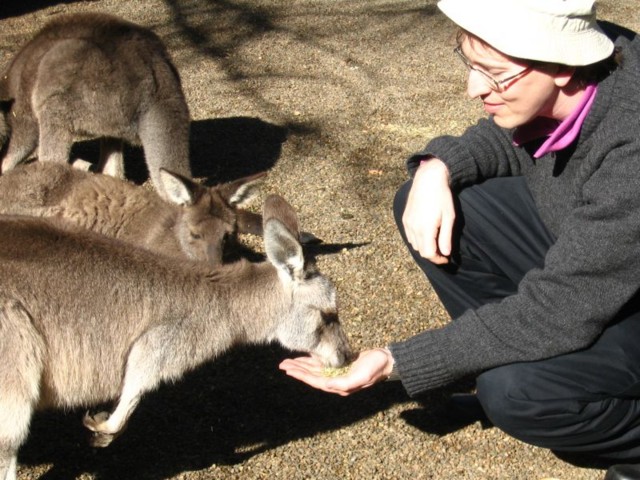
They even keep their birds mostly uncaged, where they can fly about in the zoo.
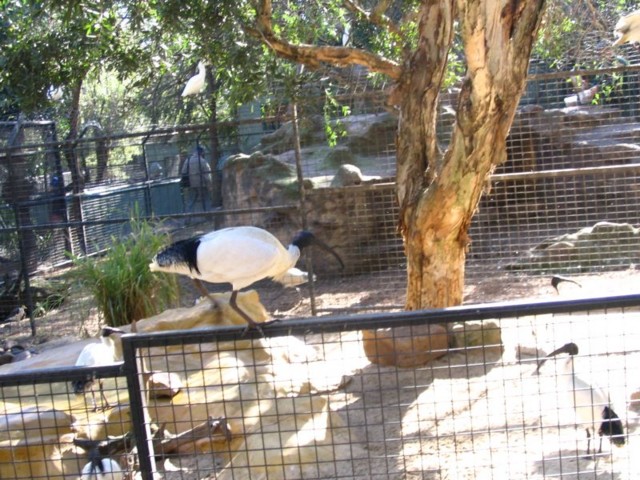
This can be a very unusual experience, because Australian birds tend to be larger and more colorful than what you would expect. Having a flock of large birds zoom past your ears is quite spectacular, I can tell you.
But where it gets real bizarre, is that these animals can be seen outside, just wandering about. For example, these large birds
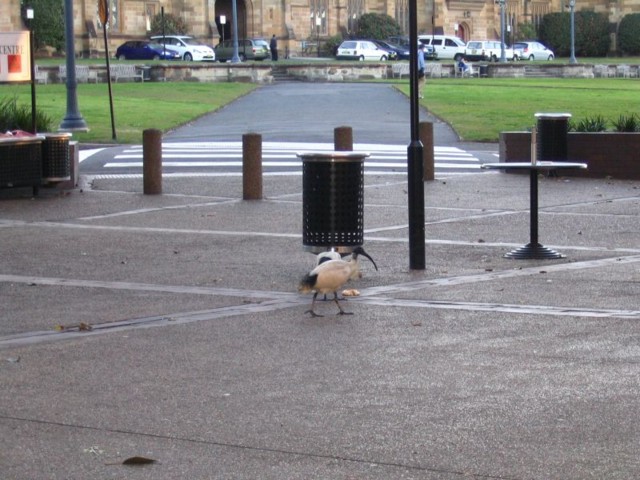
were all over the place when we visited Barak's university, and these pictures were taken from the house of Barak and Na'ama:
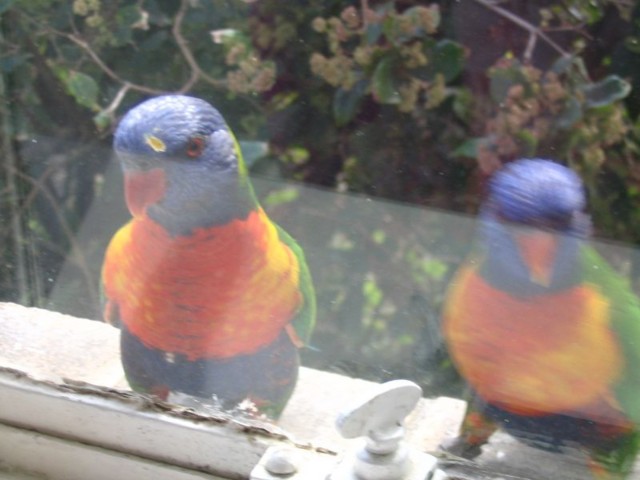
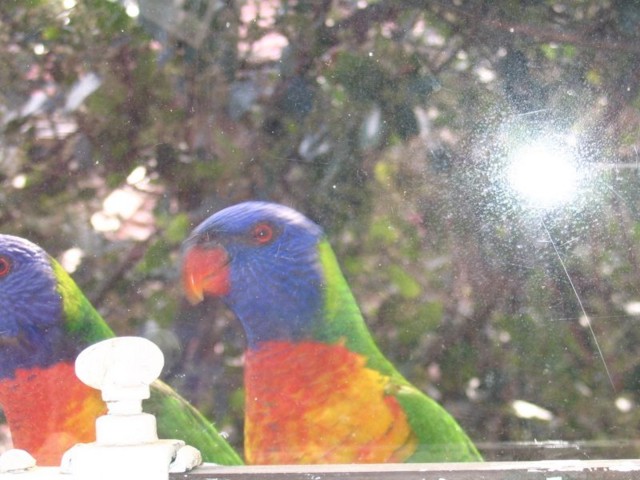
And on that night, outside the same window, we took these pictures:
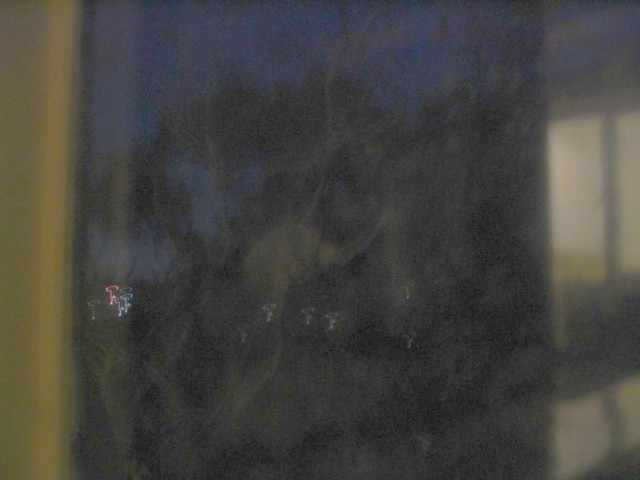
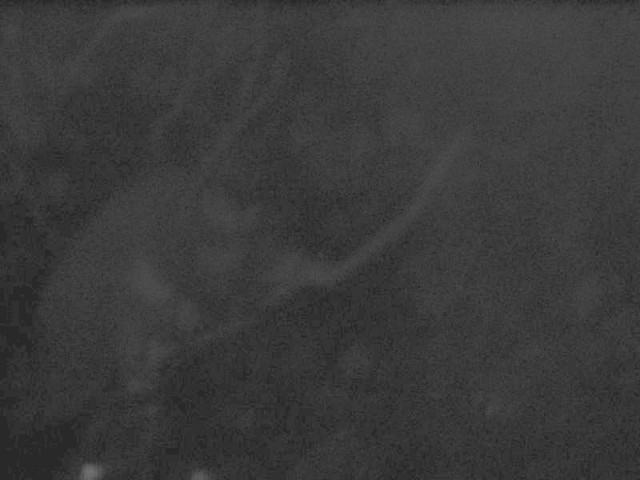
If you can't see the Possum in this picture, I don't blame you. Here's what they look like after you turn the flash on:

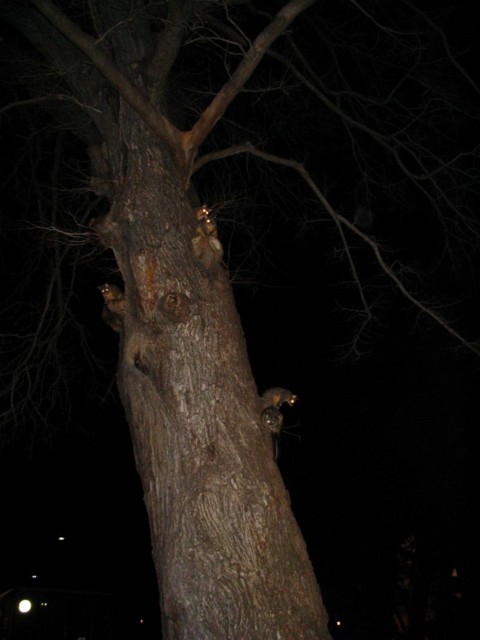
Australia is strange in that sense, too: they don't have any Opossums. They have Possums. They don't have any Iguanas. They have Guanas. Go figure.
In any case, this page is mainly dedicated to animals we just met along the way, walking in the desert. For example:
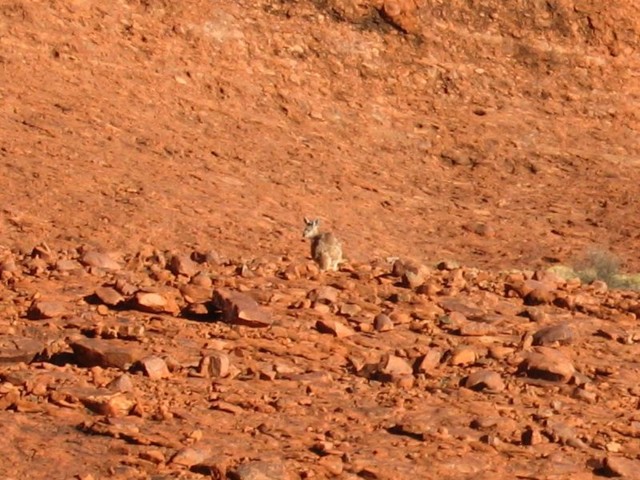
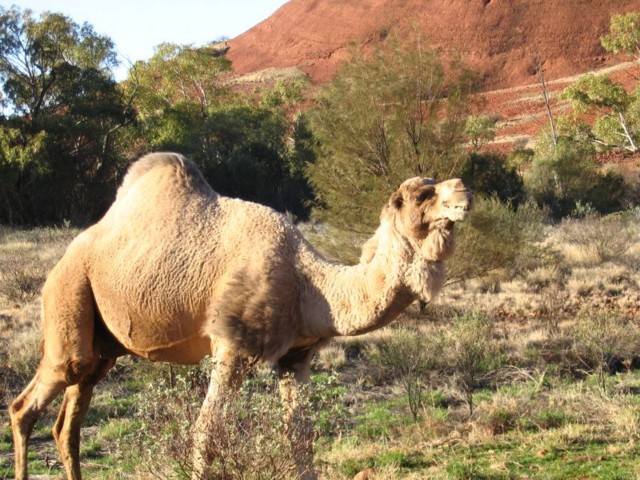
Australia used to import camels as riding animals in the desert. Then, when the railroad was built, they released them. Like almost every other type of introduced life form, these flourished in Australia, and became a great nuisance. However, crafty Australians found a solution to the problem: Australia is now probably the only country in the world that exports camels to Saudi Arabia.
In the picture on the left, by the way, what you may or may not see is a Euro. It's probably not accepted as currency anywhere in the EU, but that's what it's called. Although I can't tell them apart, these are animals completely separate from both Kangaroos and Wallabies. If you weren't able to spot the Euro in the picture, this is not surprising. The only way to really see these guys is to wait until one of them moves. Look now!
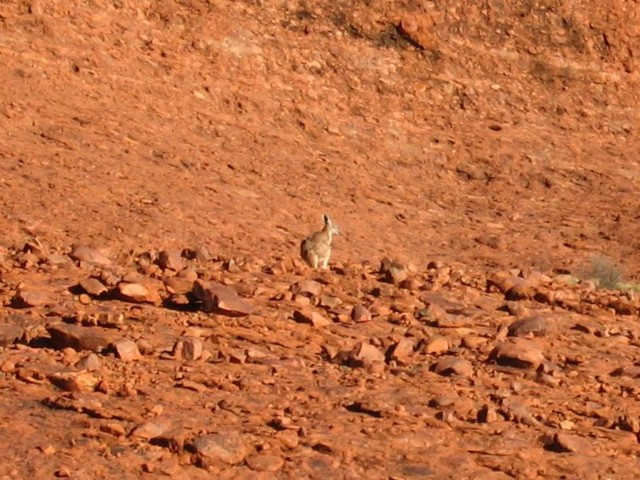

Can you tell the difference between this animal and Australia's famous emblem animal, the red kangaroo? (left) or a Wallaby? (right)
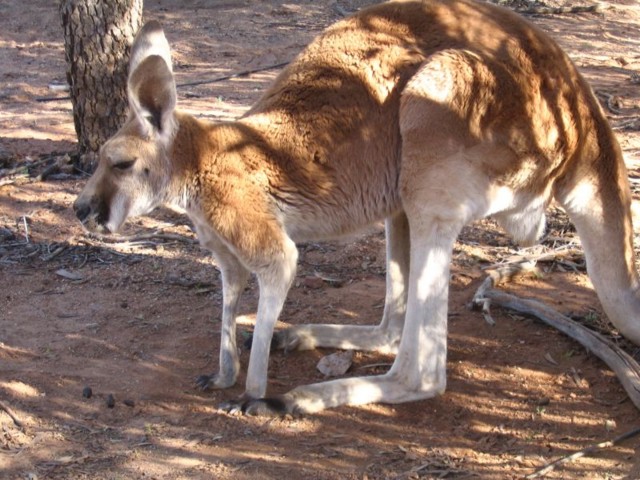
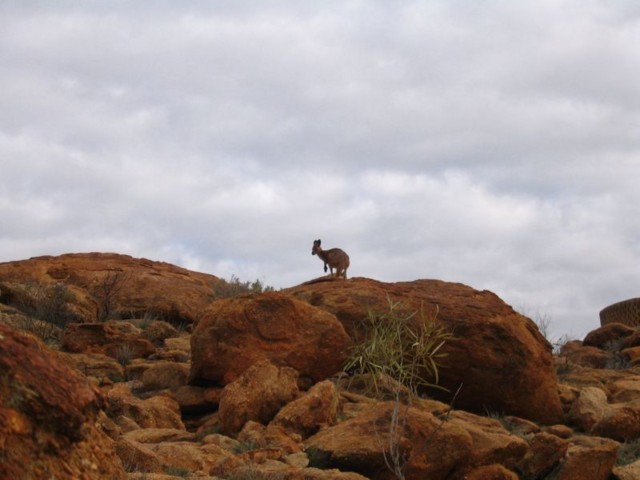
Oh, and, by the way: did you know that the red kangaroo, the largest of kangaroos, reaching up to 2.2 meters in height, has the best ratio of calories per mile of all animals?
Anyway, this particular red kangaroo was photographed in a wildlife park where we also saw a bird show with free-flying birds
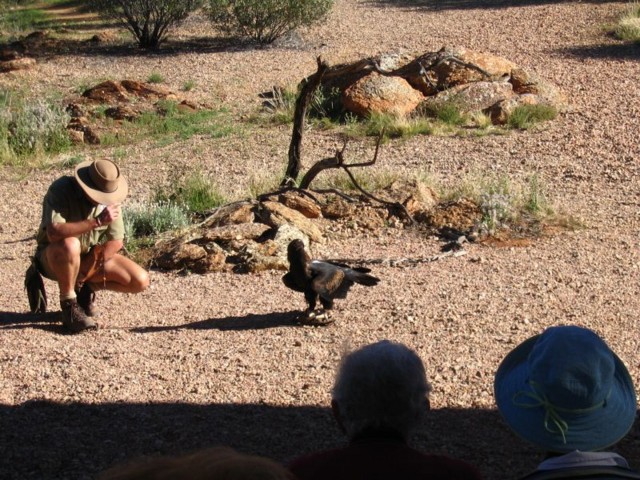
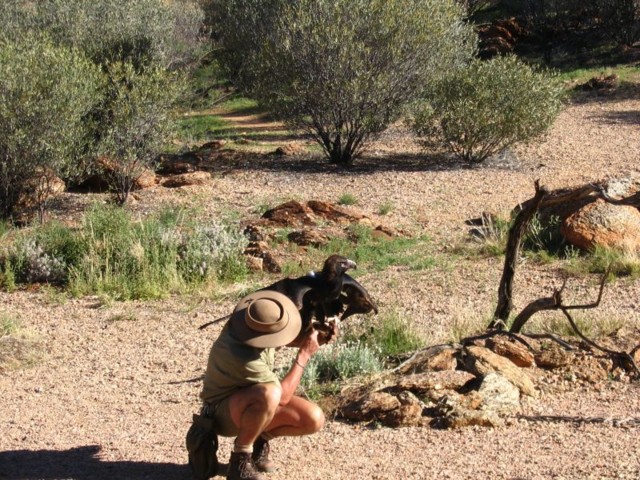
(a popular concept in Australia. We saw a bigger and better one in Taronga)
but kangaroos are also very abundant in the wild.
There are 15 kangaroos in Australia
for every human being. Sometimes the airport in Canberra, the nations capital,
is closed because of kangaroos blocking the runway.
Here's another animal only found in Australia: the dingo
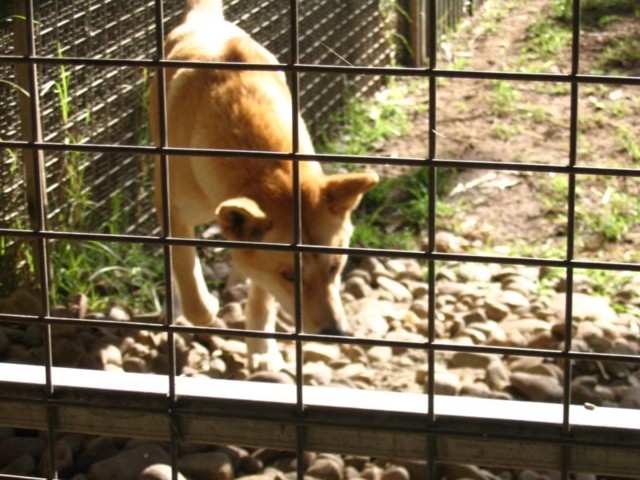
The dingo is what Australians call a "Newcomer". This means that it was neither a species whose ancestors have been in Australia since it broke away from Antarctica, nor was it brought by European settlers. It is, in fact, a subspecies of the common dog that came into Australia roughly 4000 years ago and has since reverted to wild, wolfish behavior. Australian farmers know it especially because it likes to eat their sheep, however, feelings towards the dingo have changed considerably in recent years. There is a tendency, very common in Australia nowadays, to take Australian animals that used to be considered pests and to start considering them for their better traits. This is usually done on account of there not being many more of them left to consider. (One projection I heard places dingo extinction only 50 years in the future.)
In an attempt to preserve the dingo population, there has even been talk about preventing dingoes from breeding with dogs, but this is a controversial issue. dog-dingo breeding certainly increases the number of dingoes, but it also makes them less Dingo-y. That's the sort of dilemmas that keep you awake at night if you're an Australian. What a life!
In any case, dingoes are dangerous animals. They are wolfish canines, unafraid of most things living in their habitats, and if you see one you should by no means make any attempt to play "fetch" with it or to pat it, as is demonstrated in the pictures below.
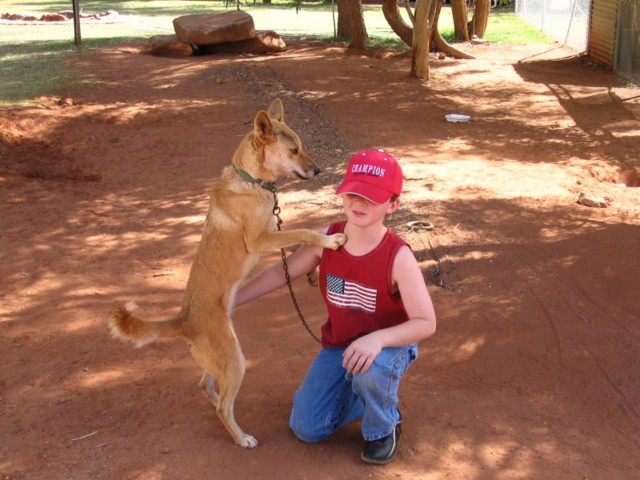



These pictures, in case you're wondering, were taken on one of our coffee-and-tea breaks in the desert. Just about everywhere we stopped - anywhere where there was coffee and tea to be had, that is - the locals were raising a few roos, dingoes, emus
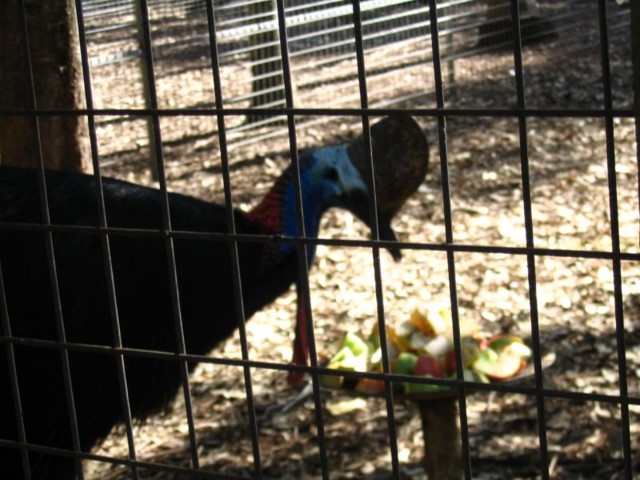
(the other animal on Australia's emblem), camels and a great many parrot and cockatoo types. I guess it's the common practice out there. At one point, I saw in one of our stops somebody growing a three-story-high cactus, and there was no one to share my excitement. They're just too common over there. One person I pointed this cactus out to said to me:
"Yeah, I got one just like it at home."
Go figure.
And here, last but not least, is one of my personal favorites:

This small and unassuming bird, technically known as the pink cockatoo, is commonly referred to as a "galah". (Accent on the last syllable.) The story behind this is as follows:
These birds are chattery and often appear in groups. Therefore, when referring to groups of women gossiping to each other, the Australians say that this is "Galah talk". This was all nice and neat, until somebody pointed out that if "Galah talk" is gossip, this reflects poorly on this innocent bird. Hence, no more "Galah". Now, they are back to be called the pink cockatoo. Having said that, let me point out that it's about time somebody takes the side of the "Bulbul" who has suffered the same form of abuse for years and years now.
Told you it's a crazy country. Didn't I?